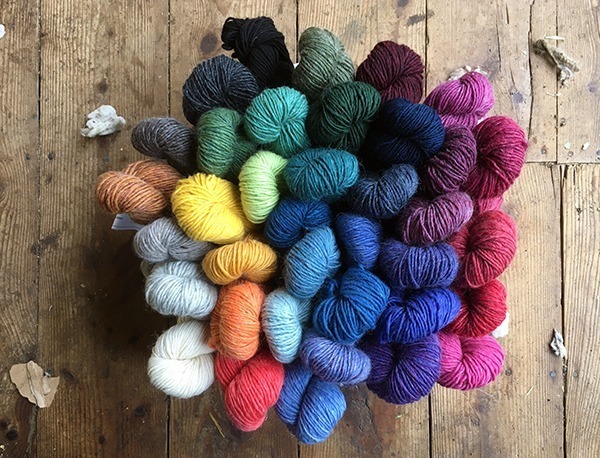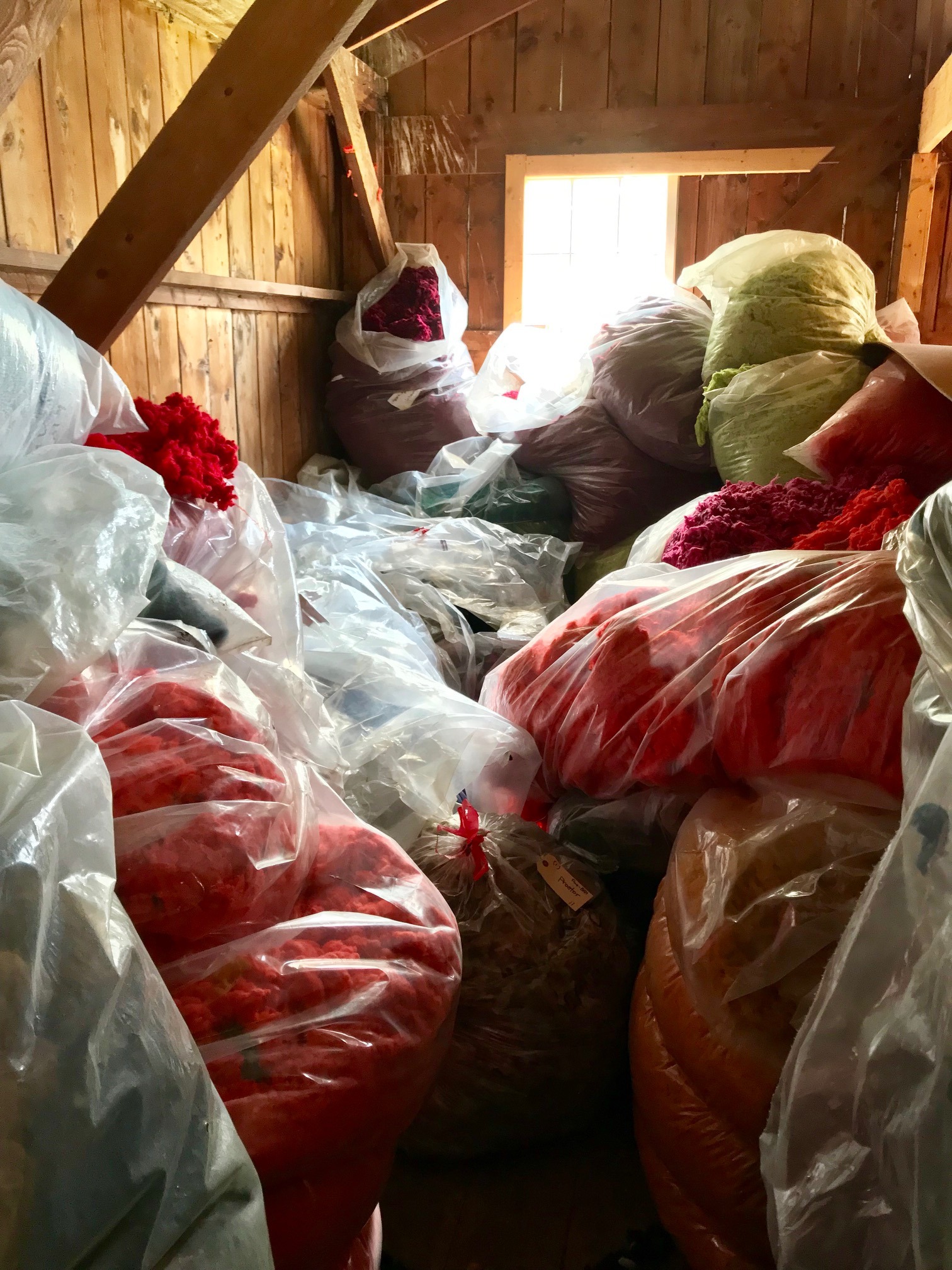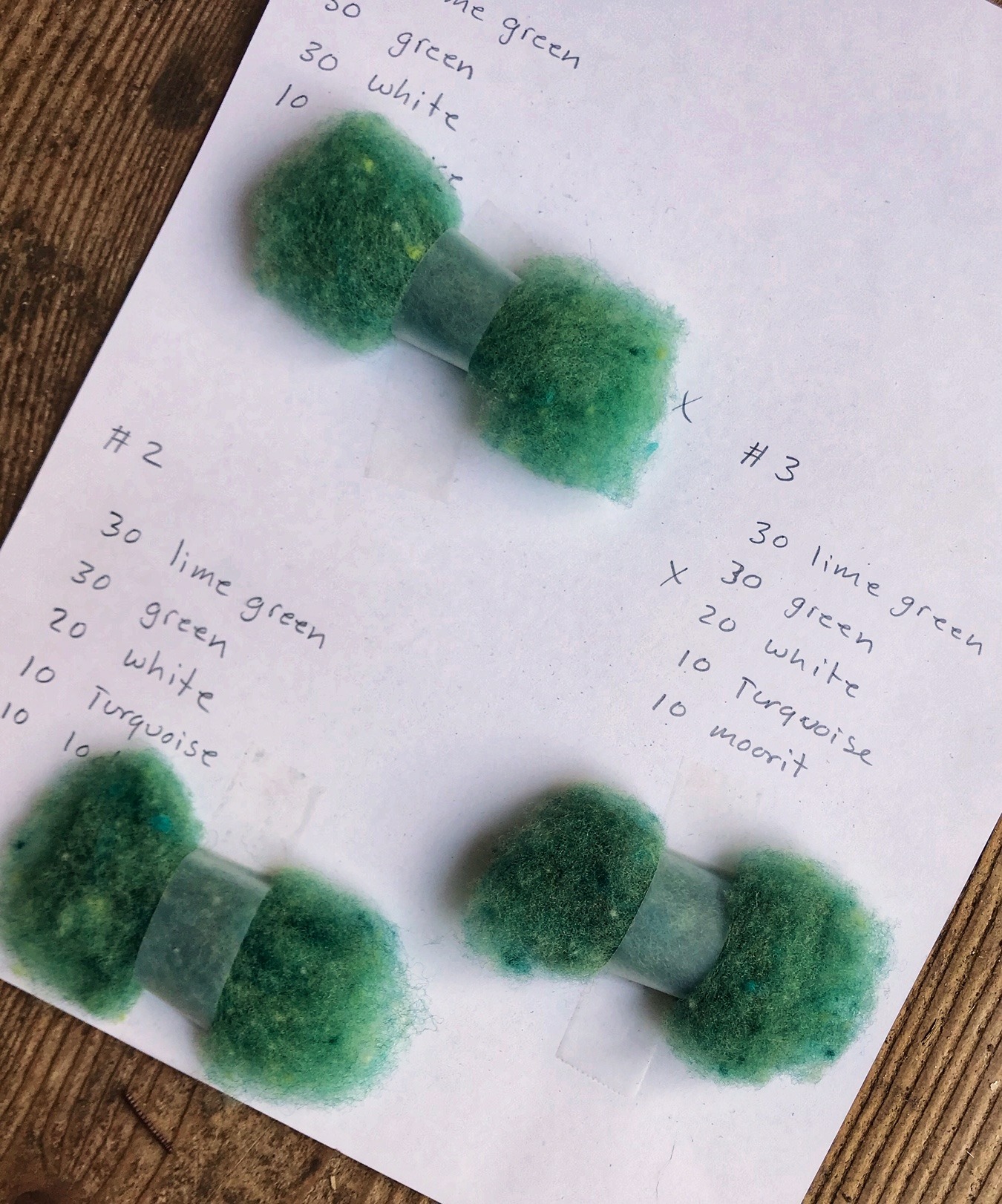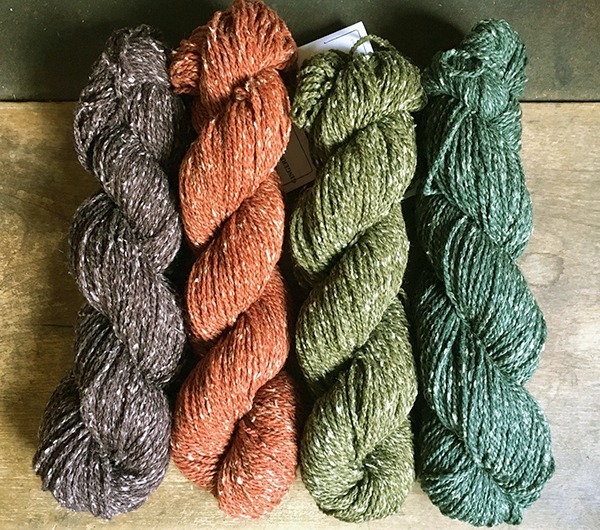Our Mill is small and our space is limited. As visitors move through our production floor on one of our tours, they often ask, “Where do you dye your yarns?” And the answer that frequently surprises them, is that we don’t. We don’t have the space or the water to dye skeins here at our facility in Putney.

Our glorious spectrum of many hues is created (for the most part) by carding unique “recipes” of various shades of bale dyed wool. The Mountain Mohair shown above also includes a touch of light or dark mohair as well.
One of the fun surprises that we share with on our Mill tour, is the back corner of the fiber shed where we store all of our great big bales of dyed wool. This is fiber that was sent to be scoured and dyed in Philadelphia at Littlewood Dyers. (We don’t know of any sheep that are growing fiber of these glowing shades.)

When designing a new color, our favorite fiber genius Melissa Johnson hand cards minute amounts of these colors; and comes up with the perfect ratio of various colors (and occasionally un-dyed fiber as well). Below you can see various versions of a new color that allow us to select the perfect iteration that will complement the other shades of yarn in the line it will eventually join.

Once we have the “recipe” for our new color, we can use those ratios of color and fibers at a much larger scale to create a batch of yarn than might yield several hundred skeins, all perfectly matched. Adhering to that ratio ensures that our next dye lot should be as close as we can make it to the last one.
Often, it’s the un-dyed fibers that can present some fluctuation. One year’s shearing of a natural dark wool may be closer to charcoal; the next may be a warmer dark chocolate in hue. This is all due to the natural variations in the flock’s experience from season to season when weather and access to water impacts their grazing; which is in turn, reflected in the fiber that they grow.

Here, you can see the several stages the fiber goes through: weighed out and ready to be blended by the picker, before heading into the carding machine, and finally in a finished skein where you can see that those colors cohere into something more harmonious than the individual parts.
Our Cotton Comfort is an exception to this rule of blending color in the carding process. Our unbleached white skeins are sent out to be dyed after they have gone through our entire production process, once they are in skein form.

You can see clearly illustrated how the cotton and wool in this yarn react differently to dye. In all of these skeins, the wool in the yarn absorbed the dye faster than the cotton, causing tweedy flecks of lighter material which is actually the 20% cotton blended throughout the yarn.
The beautifully dyed skeins are shipped back to us in great big bundles and we complete the finishing here at the Mill by twisting up each skein and labeling them for sale.
We hope that your summer travel plans will allow you to stop by the Mill and check out our production floor in person. We’re confident that we’ll be able to show you something that will surprise you; and give you some additional insight into how our yarn is made.
